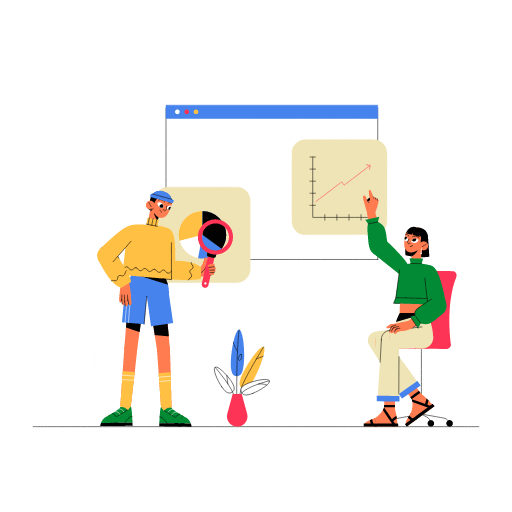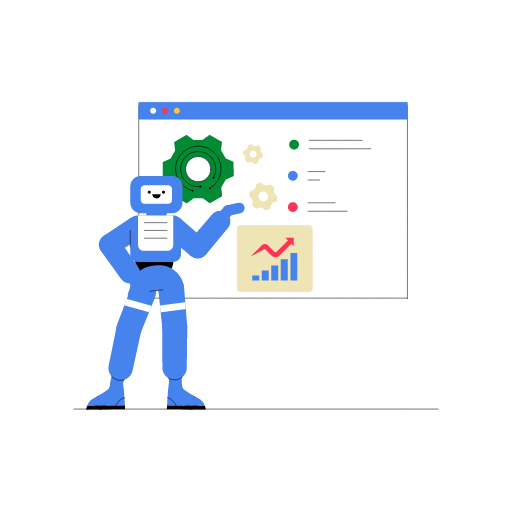6 Tips to Use Business Data to Craft a Strong User Persona in 2024 (GUIDE)

1. Use the 80/20 Rule
Your product or service likely appeals to a bunch of different kinds of people - that's great, but it's important to narrow down to a specific audience. To do this, you can use the 80/20 Rule - create personas based around the roughly 20% of customers that account for 80% of your revenue.
Are you pre-revenue? Which of your users/potential customers are the “super-users”? These should be the ones who use your service the most, or if you're still in the ideation phase, are the most committed/engaged (whether in terms of signing letters of intent or investing time/money, etc).

2. Use your Google Analytics Data
Use Google Analytics to gain a comprehensive view of your website visitors' demographics (such as age and gender) and their interests (for example, in specific types of content or activities). By examining these insights, you can paint a vivid picture of your typical user. For instance, if the data reveals a strong interest in health and fitness among your audience, this could guide you to prioritize health-focused content, products, or services. Additionally, understanding the age range can help tailor your messaging to resonate more effectively with your audience's lifestyle and values. Leveraging Google Analytics for these insights allows you to refine your personas with a high level of detail, ensuring that your business strategies are aligned with the actual preferences and behaviors of your target audience, thereby enhancing engagement and conversion rates.

3. Understand your Customer Motivations
Understanding customer motivations is critical in developing user personas that are both realistic and actionable. Gaining insights into what drives your customers can be achieved by meticulously analyzing feedback collected from surveys, social media, or direct communication. It's good to pay close attention to the language and emotions expressed by your customers, as these can offer a window into their motivations.
Something you should keep in mind is that motivations can vary widely among your customers. To make a strong user persona (and provide the best offering to these different needs), segment your audience based on their primary motivations. For example, while some may be motivated by convenience, others might prioritize sustainability or affordability. By identifying these motivational segments, you can tailor your messaging and product development efforts to align with each group's unique preferences. You should A/B test these motivations with different marketing copy to validate them.
Employing customer journey mapping offers a nuanced understanding of customer motivations throughout their lifecycle. This method involves charting the steps customers take from initial awareness to the purchase phase and beyond. Through this process, you can pinpoint crucial decision-making moments and the underlying motivations at each stage. Armed with this knowledge, you're better equipped to design touch-points that not only resonate with these motivations but also nurture them effectively.

4. Is your business innovative? If so, understand where in the Innovation Adoption Cycle your business falls.
The Innovation Adoption Lifecycle, particularly when applied to technology, segments the market into five main categories based on consumers' willingness to adopt new technologies. Each segment represents a different characteristic and approximate percentage of the population. These segments are:
1. Innovators (≈2.5%): Innovators are the first to adopt new technologies. They are willing to take risks, are highly knowledgeable about technology, and have the financial resources to afford the potential loss from an unproven innovation. Innovators are important for their initial support of new products, but because they represent a small portion of the market, relying solely on them is not sufficient for mass market success.
2. Early Adopters (≈13.5%): Early Adopters are a more significant segment than Innovators and play a crucial role in the adoption process. They are respected opinion leaders in their communities and have a high degree of social influence. Early Adopters are not as risk-tolerant as Innovators but are willing to adopt new technologies if they see the potential for a significant advantage. Their endorsement helps new technologies gain wider acceptance.
3. Early Majority (≈34%): The Early Majority adopts new technology before the average person but is not as quick to embrace change as Innovators and Early Adopters. They prefer to wait and see how new technologies perform for the early adopters before making a commitment. The Early Majority values practical benefits over technological novelty. They require evidence that a product is effective and useful before adopting it.
4. Late Majority (≈34%): The Late Majority is skeptical and cautious about new technology, adopting it only after a significant portion of society has already done so. This segment adopts new technologies due to peer pressure or economic necessity rather than a genuine desire for innovation. The Late Majority needs proven efficacy and the resolution of any issues that arose during earlier stages.
5. Laggards (≈16%): Laggards are the last to adopt new technology. They are traditionally minded, focused on the past, and may never adopt certain technologies. Laggards typically have an aversion to change and adopt new technologies only if absolutely necessary. They rely on traditional methods until they are no longer viable. Innovation doesn't necessarily need to be solely about groundbreaking technology or products; it can also be about novel approaches to service, customer engagement, process improvements, and the presentation of traditional offerings.

5. Incorporate your Customer Conversations
Have you talked to your customers/potential customers? If not, you should. We recommend reading The Mom Test for more insights on how to conduct good customer interviews. A good user persona should be based on real people. What do you know about them? How old are they? Where do they live? What interests do they have? Focus on the 20% from the 80/20 Rule. What words would you use to describe them?

6. Is your business on Facebook/Instagram? Use Meta Audience Insights
To ensure that your user personas are not just creative guesses but grounded in real data, leveraging Meta Audience Insights is a vital strategy if your business is active on Facebook or Instagram. This powerful tool provides a wealth of data about your current and potential customers, diving deep into demographics, interests, behaviors, and more. Here's how you can use Meta Audience Insights to craft stronger, data-driven user personas for your marketing strategies.
1. Start with Broad Demographics: Begin by exploring the age, gender, location, and language of your audience. Meta Audience Insights allows you to understand the basic demographics of people who are connected to your page, as well as the broader Facebook and Instagram audience. This step helps in setting the foundation of your persona by identifying who they are at a surface level.
2. Dive into Interests and Behaviors: Beyond basic demographics, delve into the interests and behaviors of your audience. What pages do they like? What activities do they engage in online? Are they frequent travelers, gadget enthusiasts, or fitness buffs? This information is crucial for fleshing out the personality and lifestyle aspects of your user personas, making them more relatable and realistic.
3. Analyze Engagement Patterns: Understanding when and how your audience interacts with your content can provide insights into their daily routines and preferences. Look at the times of day when engagement is highest and the types of content that resonate most. This helps in tailoring not just the persona but also the content strategy to ensure maximum engagement.
4. Segment Your Audience: One size does not fit all. Your audience on Facebook and Instagram will likely consist of several distinct segments with varying interests and behaviors. Use Meta Audience Insights to identify these segments and create multiple personas. This approach ensures that your marketing efforts are targeted and relevant to different subsets of your audience.
5.Monitor and Iterate: As your business evolves and grows, so will your audience. Regularly revisiting Meta Audience Insights to update your personas is crucial. Keep an eye on shifting trends, new interests, and changing demographics to ensure that your personas remain accurate and effective over time.
By leveraging the depth and breadth of data available through Meta Audience Insights, you can create user personas that are not only vivid and detailed but also rooted in the reality of your audience's online behavior. This not only enhances the relevance of your marketing strategies but also significantly improves your chances of engaging your audience in a meaningful way. Remember, the goal of using these insights is not just to know your audience but to understand them so well that your marketing efforts feel personally tailored to each segment of your audience.
Want to make a comprehensive User Persona in 5 minutes? Use our AI powered platform to generate insights instantly based on a description of your business.